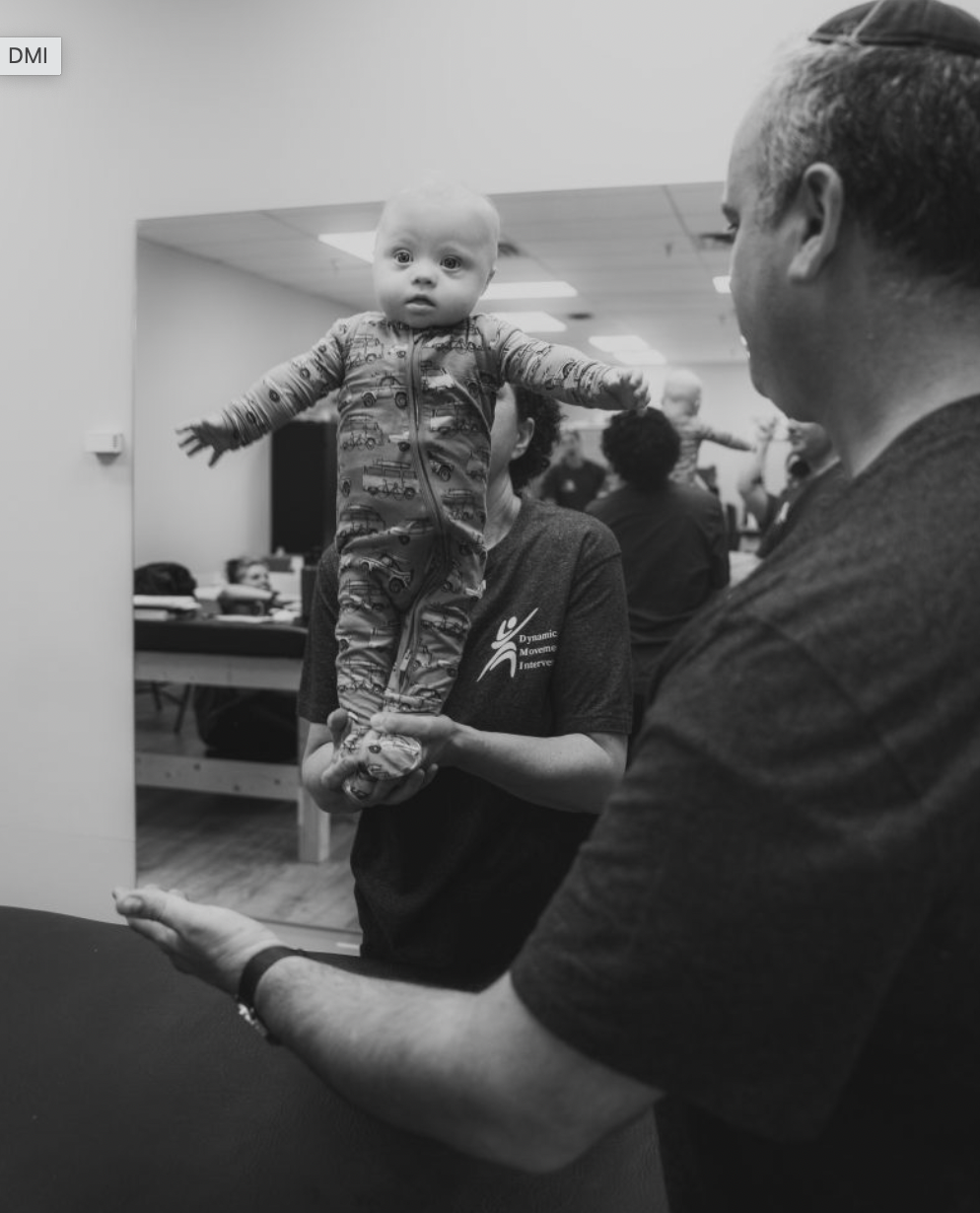Dynamic Movement Intervention (DMI) is a hands-on active motor-based intervention style used by physical and occupational therapists. It is used to treat children with gross motor impairments and is commonly used for children with diagnoses of Down Syndrome, Cerebral palsy, global developmental delay, hypotonia, chromosomal abnormalities/genetic disorders, spinal cord lesions or acquired brain injury. In order to provide DMI-based intervention, practitioners must complete continuing education courses focused on handling and facilitation.
DMI targets the acquisition of automatic postural responses and promotes the development of gross motor milestones including rolling, sitting, crawling, transitional movements, standing skills and walking. The goal of DMI is to elicit a consistent and specific active motor response from the child by completing an exercise using a dynamic handling technique.
DMI treatment focuses on the concept of neuroplasticity. Neuroplasticity is the brain’s ability to strengthen current and create new motor pathways in the brain, using repetitive movement patterns. This helps the brain make new neuronal connections and improves the body’s ability to acquire new developmental motor skills.
What Happens During a DMI Session?
After the initial assessment, the therapist will identify the child’s areas of improvement, which helps guide the treatment. The therapist chooses exercises that challenge the child’s neurological system to their highest level of skill, as well as exercises that develop core and foundational milestones. Exercises may involve movement against gravity, progressively more challenging support, provocation of desired movements, as well as postural and strength challenges.
During the treatment session, the child will complete many different exercises which provide new and varied sensory and motor challenges and each exercise is repeated around 5 times. Exercises may be repeated from session to session until the movements become automatic, which results in improved balance and overall function. Exercises are conducted on a tabletop or the floor, based on the child’s abilities.

Fig. 1. DMI in Practice. Retrieved from https://dmitherapy.com/
DMI therapy works well in conjunction with other therapeutic techniques and equipment. These are often combined in a treatment session to provide better alignment and enhance outcomes.
If you would like to learn more about DMI, check out the official DMI website.
If you think DMI based intervention would be helpful as part of your child’s treatment plan you can speak to your child’s therapist or use the button below to get started with Dr. Anne Wolfe.
